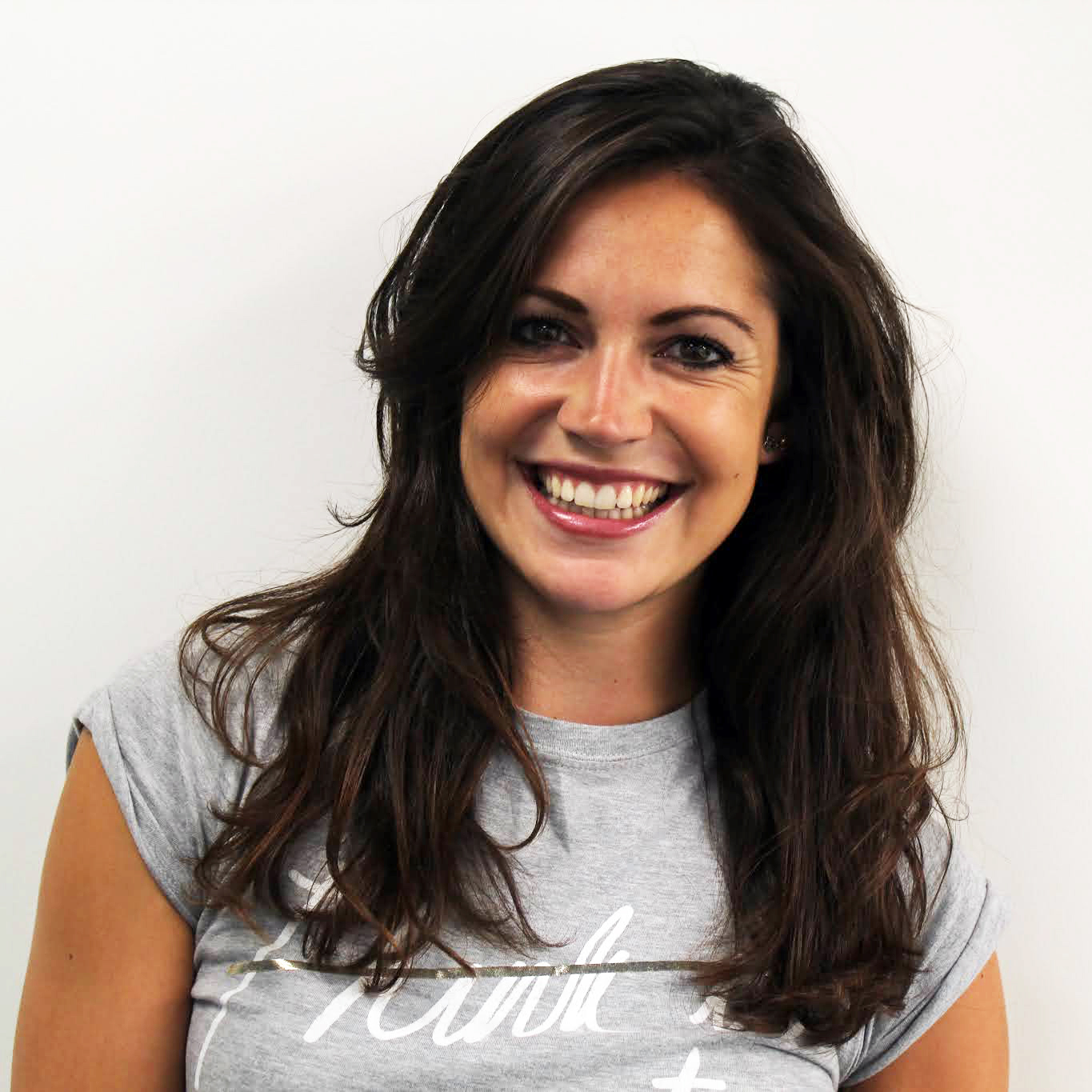Dumbbell arms workout: How to build up your biceps and triceps at home
Seven simple moves to build up your biceps and triceps using a set of dumbbells


As the seasons change and we swap jumpers for t-shirts, a dumbbell arms workout is the perfect way to tone up.
You can do this one all in the comfort of your own home. All you need is a set of the best adjustable dumbbells and you're good to go!
We've covered a full-body dumbbells workout before, but this dynamic septet of moves targets your arms specifically to help you lose weight on your arms and really improve muscle tone.
Working out your arms isn’t just good for aesthetic reasons. It’s also useful to help with everyday tasks such as carrying shopping and lifting items, plus it can help with other exercises such as rowing, running and swimming. Grip strength is also linked to longevity in order adults, according to studies, helping prevent falls and being an indicator of good heart health.
Unsure what moves will help target all your arm muscles? That’s where we can help!
Steff Alexander is a Trainer at F45 gym in Shepherds Bush. She's rounded up seven moves that will work your arms and leaving you feeling stronger.
Steff explains that for each of the below moves, a beginner should aim for three sets in the 10-12 rep range. A more advanced weight lifter should aim for four sets in the 8-10 rep range.
Start your week with achievable workout ideas, health tips and wellbeing advice in your inbox.
Don’t be fooled by the lower rep range number, however! By the last rep, you should reach failure, which essentially means you wouldn't be able to squeeze out another rep.
To really work the muscles even harder, hold each position for 3-4 seconds and maintain tension. Slow and steady is always better than rushing through the moves.
1. Double Arm Bicep Curl
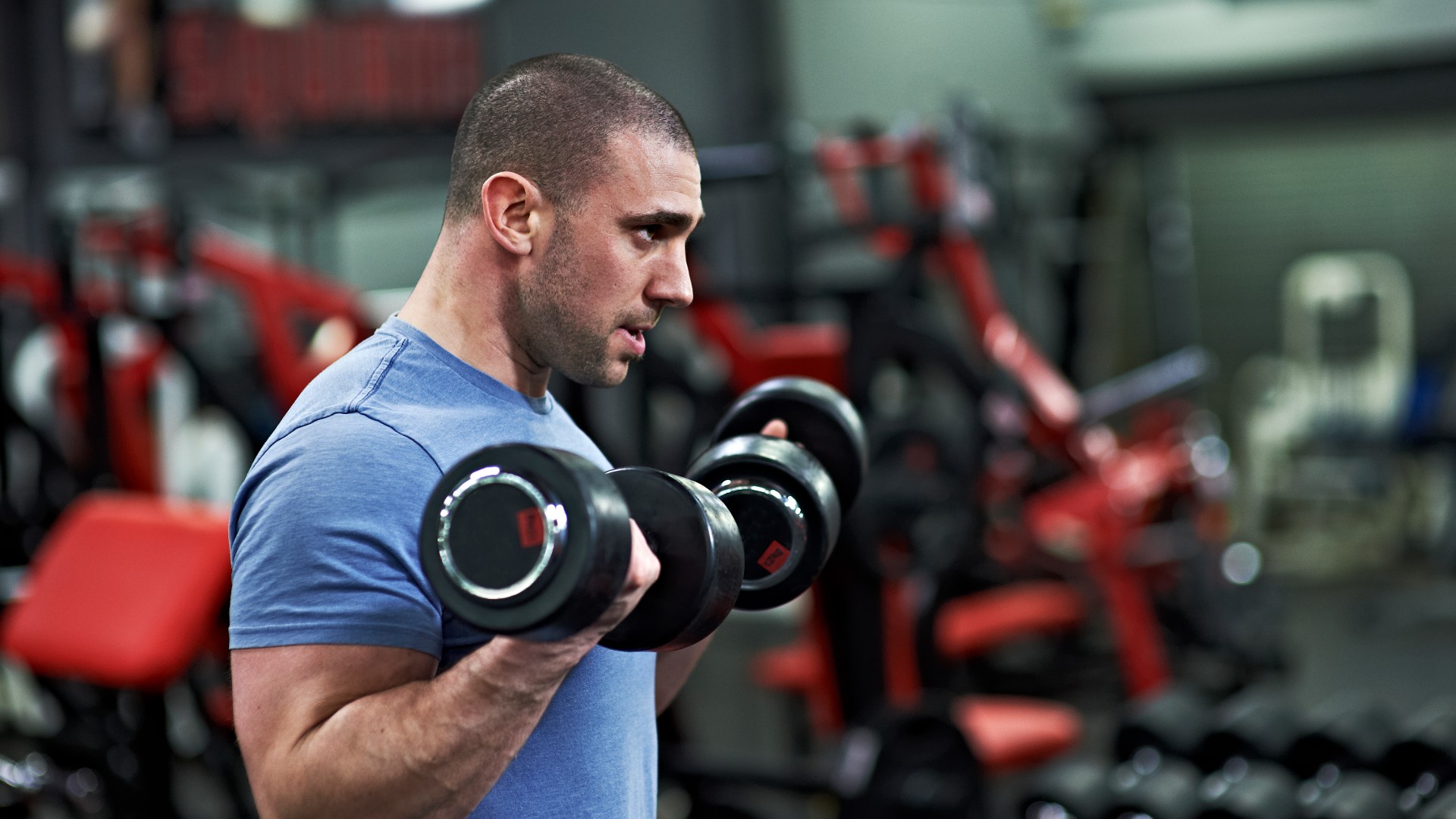
Muscles Worked: Biceps (the muscles at the front of the upper arms).
Stand with soft knees, feet shoulder width apart and abs braced. Each hand should be holding a dumbbell. Keep arms fully extended down by your sides.
Pull with your hands towards your chest and shoulders, directing hands slightly outside shoulders. Squeeze at the top of the movement, then slowly lower the arms (and dumbbells) back down to the start.
If you want to work this particular muscle further, take a look at our guide to the best bicep workouts.
Single Arm Bicep Curl
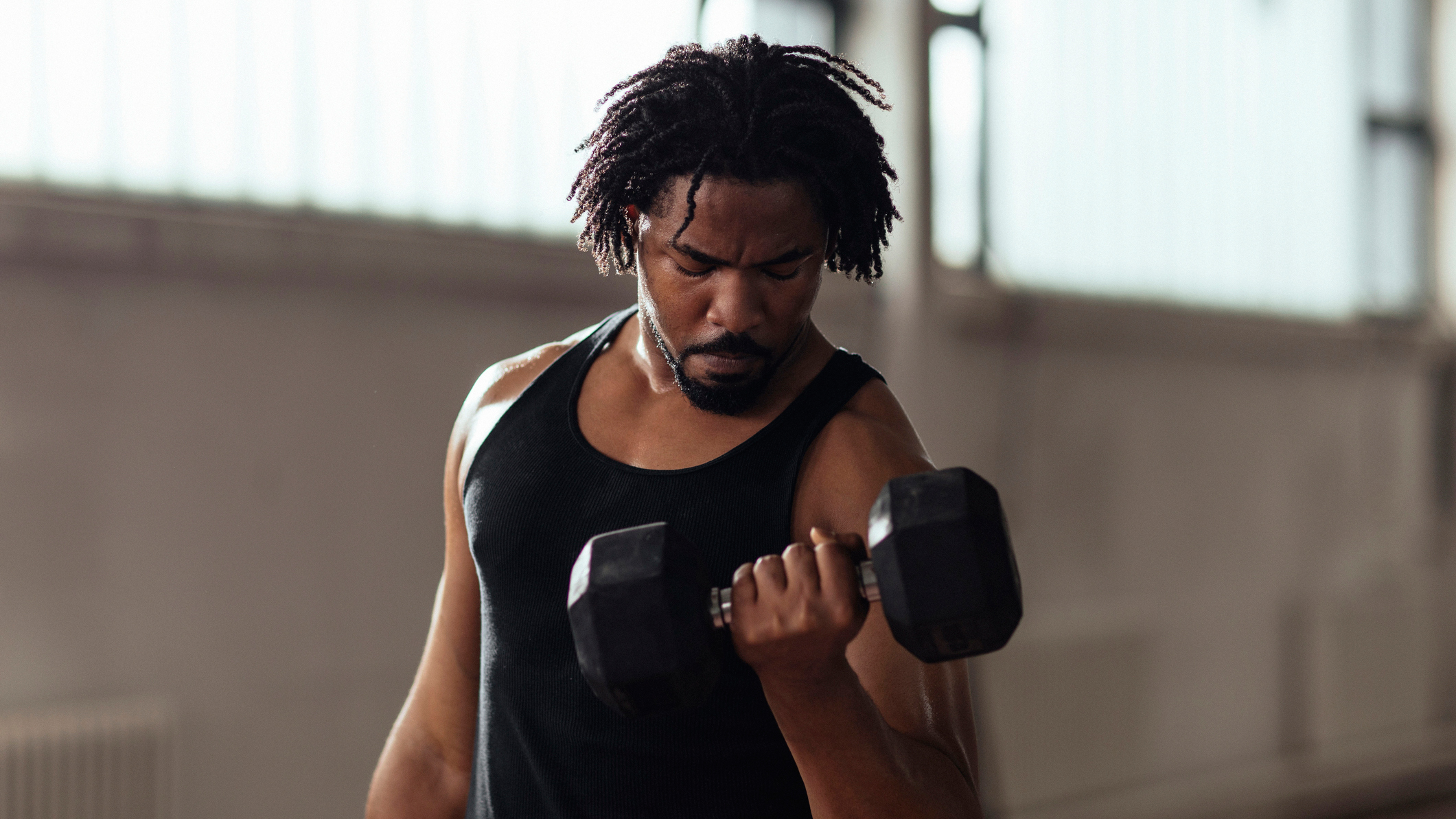
Muscles Worked: Biceps.
Use the same methodology as with the Double Arm Bicep Curl except use a single arm at a time.
‘This will increase the difficulty as the body will have to work harder for proper hip and shoulder alignment,’ says Steff. This includes the core, which will be placed under greater tension as it holds your body upright throughout the move.
Steff adds that the single bicep that’s working, will work harder without the added aid and stability of the secondary arm.
Shoulder Press
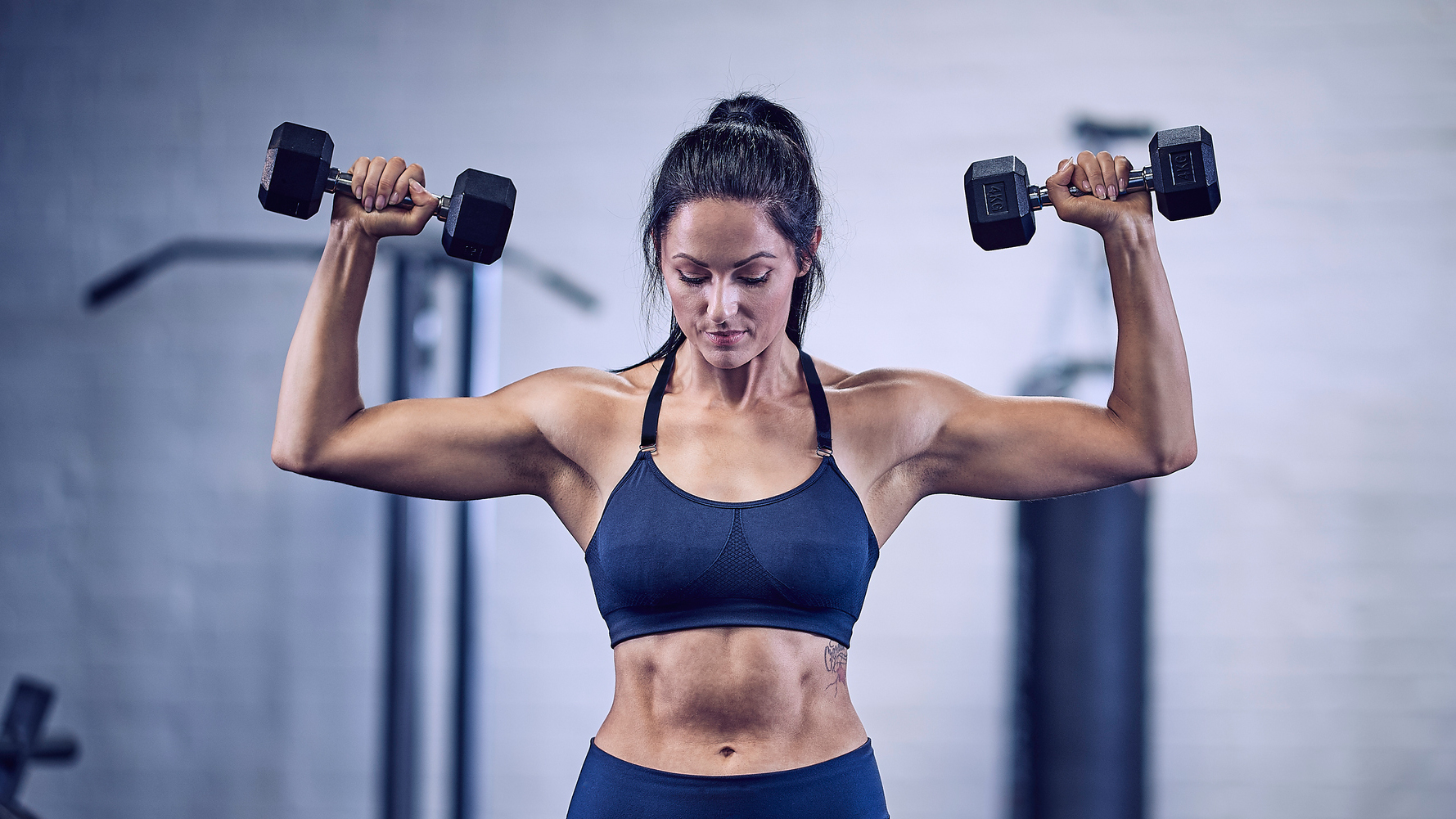
Muscles Worked: Shoulders, otherwise known as the deltoid muscles.
Hold a dumbbell in front of your face. One end in each hand, keep your elbows bent and tucked to your sides. Then, slowly straighten the arms and direct the dumbbell overhead. Hold the position, then slowly return the dumbbell back to the start.
For a more challenging workout, hold a dumbbell in each hand, as per the picture above.
Bent Over Row
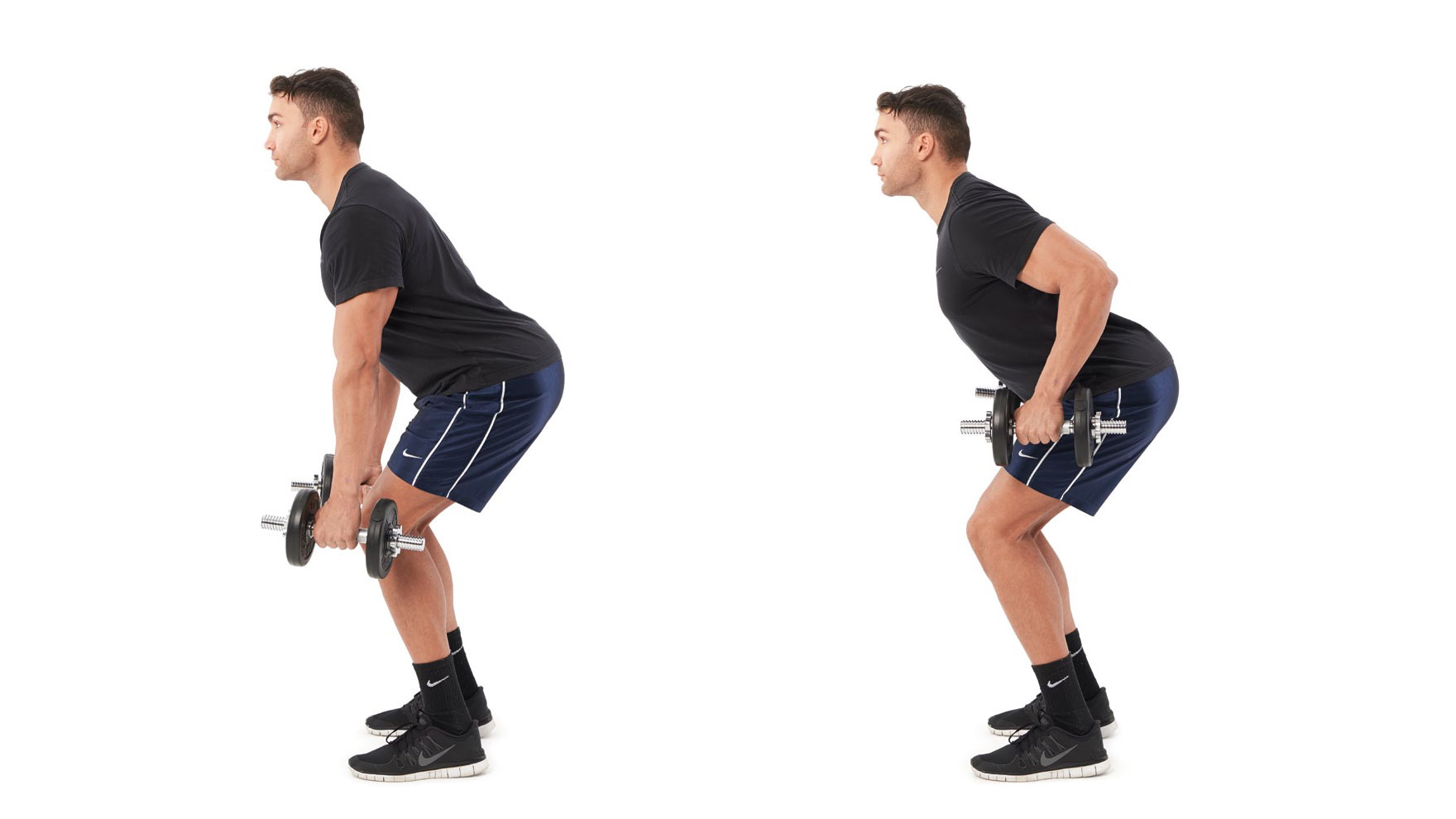
Muscles Worked: Back and biceps.
Hinge at the hips to press your bum back, keeping a flat back and engaging your core. Holding a dumbbell, arms should hand directly down below you. Keep knees soft as you slowly bend the elbows and pull the dumbbells up to your ribs/body. Squeeze the shoulder blades here, keeping the elbows close to your body. Then return back to the start. Throughout the movement, aim to keep your chin slightly tucked in.
Push-Ups
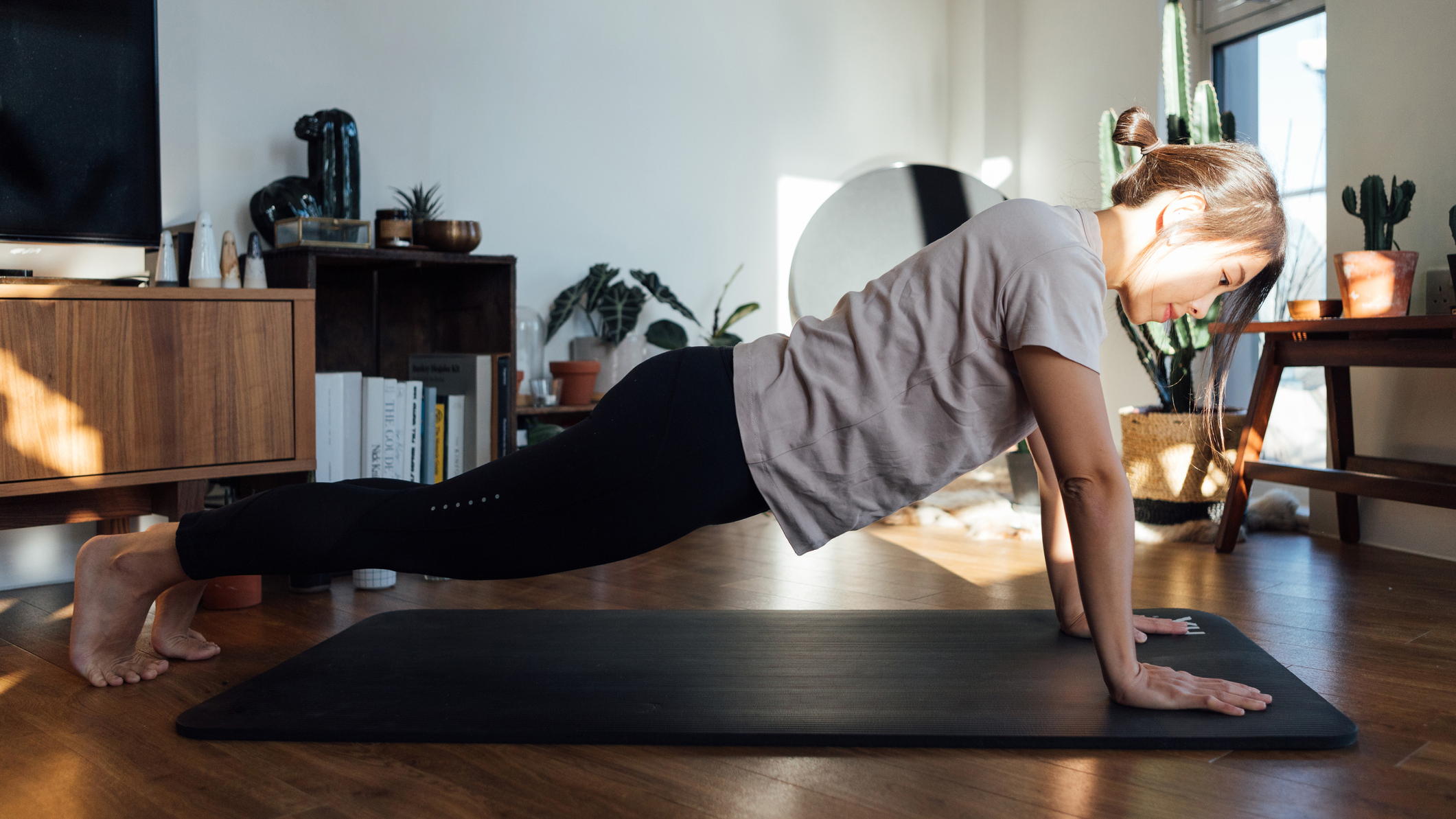
Muscles Worked: Pectorals (chest) and triceps (the muscles that run along the back of your upper arms)
OK, so no dumbbells needed for this one, but it's a great upper body move that leads to serious results!
Get on your hands and knees to start. Keep hands flat, fingers spread, and shoulders stacked over hands. Elbows should be directed back at a 45-degree angle (think of creating an ‘arrowhead’ with your elbows and avoid flaring them out).
Lift knees off floor and hold a strong plank, before directing your chest down and forward towards floor. Stop a fist width from the floor and return back to the starting position, pushing up through your palms to straighten the arms again.
If you’re struggling to stay in the plank position, do a push-up on your knees instead and work your way up to a full push-up. We have a whole host of progressions over on our how to do a push up guide
Overhead Tricep Extension

Muscles Worked: Triceps
Stand with soft knees, feet shoulder width apart and abs braced. Hold a dumbbell in both hands, up overhead with straight arms. Elbows should remain in place close to ears.
Slowly bend at the elbows, keeping upper arms close to the side of your head, and lower the weight down your back. Flex the triceps to return the dumbbell back to overhead.
To make the workout more challenging, you can use a dumbbell in each hand.
Skull Crusher
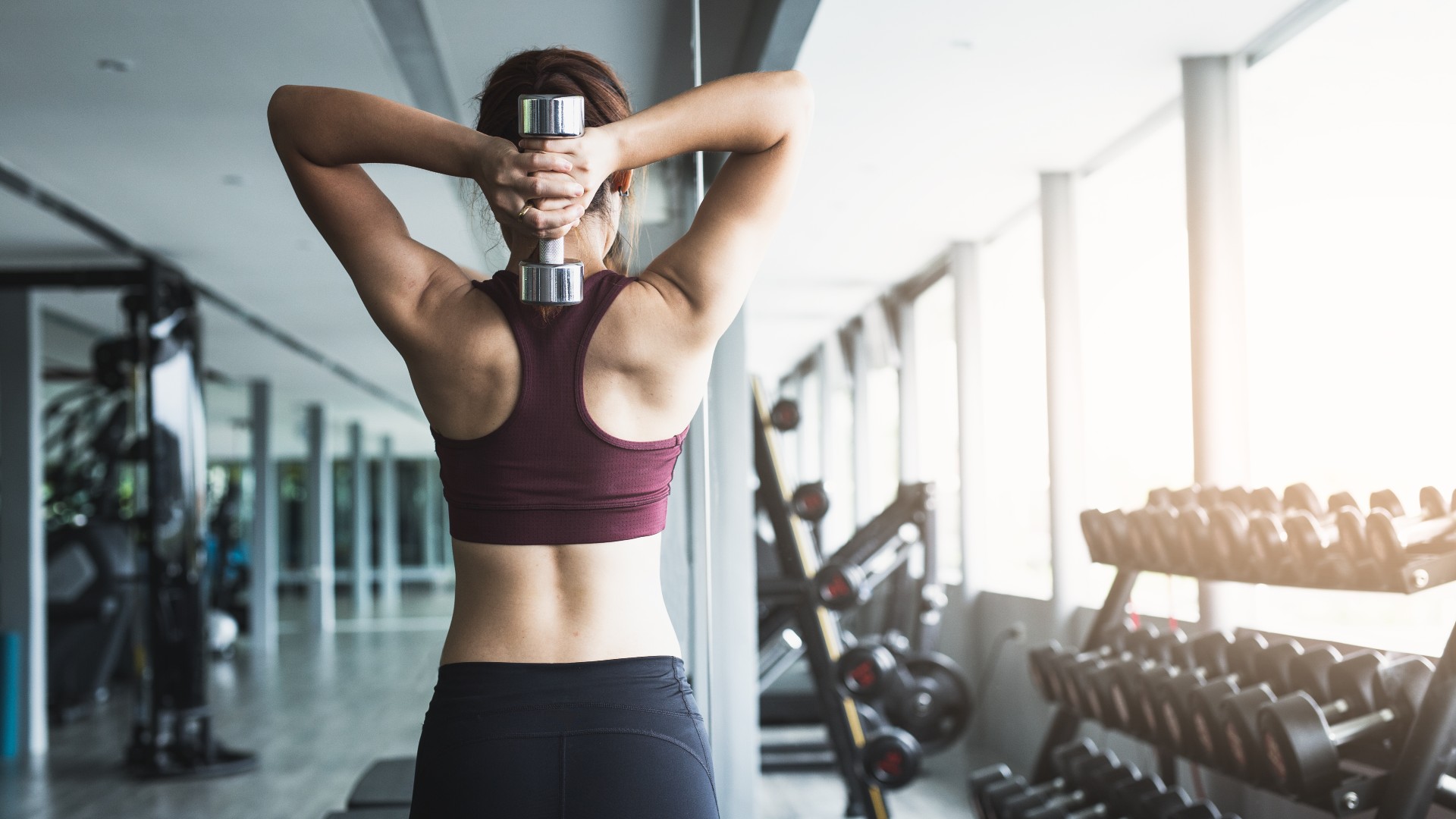
Muscles Worked: Triceps
A bit like the tricep extension, only led on the floor. Start with your back flat on the floor, feet flat and knees bent. Hold your dumbbell straight up to the ceiling, arms straight. Keeping elbows in place, slowly lower the dumbbell towards the floor just above your forehead. Take care not to overly flare your elbows.
Hold this position then return to the start, slowly.
Warming up before a dumbbell arms workout
‘A warm up is something we realistically know we should all be doing but can all too often avoid,’ says Ben Jackson owner of gym F45 South Wimbledon, who explains that warming up properly can help negate any potential injury.
‘The point of a warm up should be to prime and prepare your body for the impending load it’s about to undertake. That means that if you’re going to be doing a tonne of overhead work (think dumbbell overhead press) then you need to ensure you’ve worked the shoulder girdle through the ranges of motion and movement planes that it’s about to be made to work in.’
Ben adds that warm ups should be specific to the work that’s going to be done.
‘In an ideal scenario you would start with some gentle mobility work to get blood flowing through your joints and the surrounding musculature. You’d then progress into some movement prep that as mentioned follows similar movement patterns to what you’re going to perform in the main session. Depending on what your session consists of you then might also perform exercise specific work up sets.’
For example, an olympic lifter doesn’t go straight into lifting a 200kg barbell. They’ll work up from an empty bar allowing their body to adjust itself and get used to the load.
For this workout, Steff recommends spending 2.5 minutes warming up with a series of moves.
‘Go for one minute of start jumps, driving hands together at the top. Then go for 30 seconds of Shoulder Gaters. Start in a standing position with arms bent at 90 degrees. Keep elbows in line with shoulders, palms facing each other and rotate elbows out to each side and drive them back in.’

Finally, finish with one minute of Walk Outs. For these, start in a neutral standing position. Bending through the legs, place your hands on the floor and walk them out until you are in a high plank. Your body should be in one straight line, wrists directly below shoulders. Then push off your hands to walk your hands towards your feet making your way up to standing.
The importance of protein
‘Protein is the building block for our bodies,’ explains Ben, who adds that without protein, our body can not grow or repair and that goes beyond muscle focused requirements.
‘However the quantity required will vary depending on the individual and the requirement of protein to see muscle growth varies massively from person to person and actually, for many, matters less than the training stimulus they actually need to induce in order to achieve growth.’
He adds that a 20-something 6ft man at 10% body fat will have very different requirements than a 5ft 2” 45-year-old woman. As a general rule of thumb, for someone looking to build muscle, aiming for at least 1.2g of protein per kilo of bodyweight is a good starting point.’
So if you weigh 55 kilos for example, you would aim to get at least 66g of protein.
After this dumbbell arms workout, it’s a good idea to eat a protein-filled snack or meal, which also contains carbs. The protein will help the muscles repair from the workout, whilst the carbs help refuel your body’s glycogen - or energy - stores.
Examples of healthy proteins to incorporate include lean meats such as chicken and turkey, eggs, tofu, beans and legumes and fish. You could also opt for a protein powder to supplement your protein intake. Adding a scoop of protein to porridge or in smoothies is a quick and easy way to get a protein hit following a workout.
Lucy is a freelance journalist specializing in health, fitness and lifestyle. She was previously the Health and Fitness Editor across various women's magazines, including Woman&Home, Woman and Woman’s Own as well as Editor of Feel Good You. She has also previously written for titles including Now, Look, Cosmopolitan, GQ, Red and The Sun.
She lives and breathes all things fitness; working out every morning with a mix of running, weights, boxing and long walks. Lucy is a Level 3 personal trainer and teaches classes at various London studios. Plus, she's pre- and post-natal trained and helps new mums get back into fitness after the birth of their baby. Lucy claims that good sleep, plenty of food and a healthy gut (seriously, it's an obsession) are the key to maintaining energy and exercising efficiently. Saying this, she's partial to many classes of champagne and tequila on the rocks whilst out with her friends.
